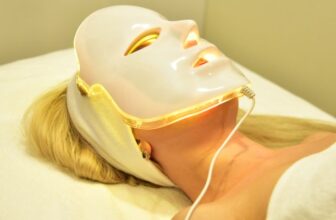
Five to seven years after a patient is treated for cancer, with either chemotherapy or radiation, there is a risk that they can develop myelodysplastic syndrome (MDS). MDS is a serious, often life-threatening, form of pre-leukemia.
The Irony
The most common cancer that causes MDS after being treated is an original breast cancer or lymphoma. Treating and surviving one serious illness, which causes another cancer to develop is the end result of MDS. As ironic and cruel as this is, it is true. Here is why it occurs: Chemotherapy drugs and radiation therapy both cause serious, permanent damage to the cellular DNA in the bone marrow. Damaged DNA predisposes the patient to developing new cancers.
There is no mechanism to determine which patients are at a higher risk of developing MDS.
The Statistics
MDS is not common; it develops in 1 to 2% of oncology patients. MDS occurrence has lessened over the past 20 years. In the 1970’s, when stronger chemotherapy was administered to treat Hodgkin’s disease, MDS developed at a higher rate of 4 to 5% of cancer patients.
What is the cure rate? MDS is difficult to cure. Only 20% of the collective patients are cured after undergoing the most frequently prescribed treatment, bone marrow transplant (BMT). Children and adults approaching their 50’s, have a slightly improved cure rate of 30 to 40%.
Keep in mind that 20 to 30% of the patient deaths after BMT are caused by complications of the procedure, which can include infection and graft failure or rejection.
Bone Marrow Transplant Simplified
The Donor
First and foremost, an appropriate donor is needed. It is critical to have the best match possible for the best results. The donor choices are as follows:
- Siblings, a brother or sister, from the same set of parents is 25% likely to be a suitable donor.
- Surprisingly, 70% of patients do not have a family member who is a suitable donor.
- The National Marrow Donor Program works diligently to find an unknown donor for patients.
The Actual Procedure
When a BMT is done with cells from a donor, it is called an allogeneic transplant.
Once a donor match is found, the BMT candidate undergoes a rigorous preparatory process. First, a central venous line is inserted to insure safe and effective delivery of medication like chemotherapy and the actual bone marrow or cord blood transplant, prior to the actual BMT. The central line is also used to obtain blood samples for laboratory analysis.
Rigorous doses of chemotherapy are given to all patients, over 4-10 days immediately before a transplant, in preparation for the procedure. It is infused through the central venous line and done for several reasons:
- To eradicate diseased cells.
- To destroy the cells that make blood, in the bone marrow. This makes space for the transplanted cells.
- To depress the immune system so it does not barrage the new donor cells.
Some patients are also pre-treated with radiation. They undergo total body irradiation (TBI) during 10 to 20 minutes sessions in one day or over the course of 7 days. This treatment is most often used for patients with leukemia, lymphoma or myeloma.
The actual transplant day is called Day Zero. On this day, the bone marrow cells or cord blood is infused, through the central line. This takes a little more than one hour. Some patients choose to have some sedation during the infusion.
With a depressed immune system and low blood counts, the BMT patient is at a high risk for complications. This is especially true during the first 100 days post-transplant. It is critical to protect the patient from exposure to infection. Sometime during the first 100 days, the patient is discharged from the hospital.
Now What?
After undergoing BMT for myelodysplastic syndrome, engraftment is a major milestone in the recovery process. Once the donor cells establish themselves in the recipient’s bone marrow, the body begins to manufacture new red blood cells, white blood cells and platelets. This is called engraftment and is the expected outcome between days 0-30 after the BMT.
Continued hospitalization, frequent blood studies, antibiotic therapy, if indicated, are medical therapies used to treat BMT patients during the critical first 100 days following their procedure.
Potential Complications
The ultimate goal is for a BMT patient to navigate through the post-procedure period without any complications. Unfortunately, complications account for 20 to 30% of patient deaths after a bone marrow transplant. What are the potential complications?
Infections involving the blood, lungs, central line insertion site and urinary tract are most common, although other infection sites do occur. The chemotherapy administered before a BMT weakens the body’s natural immune system, which predisposes the recipient to infection.
Acute graft-versus-host disease (GVHD) is a common BMT complication. Transplanted (graft) cells attack the patient (host) during the first 100 days post-transplant. If the same mechanism happens after the 100-day period, it is called chronic GVHD.
Graft failure or rejection happens when the donor cells are regected by the recipient and there are no blood cells produced or engraftment noted after 42 days. This constitutes a BMT failure and happens in 5% of patients. The treatment is to have a second transplant, either from the same or a different donor. A different donor must be used if the translpant failure is cord blood based.
MDS is a serious complication of previous cancer treatment. The treatment for MDS is rigorous and carries with it many side effects. In order for the afflicted patient to receive the crucial transplant, the general population needs to be educated about the National Marrow Donor Program, specifically the Be The Match program portion.
Jen Atkins is a copywriter with Mountainside Medical Equipment in Marcy, NY. Well-versed in marketing, Jen enjoys researching and writing about current health-related topics and sharing information about medical supplies with Mountainside Medical’s online community.





